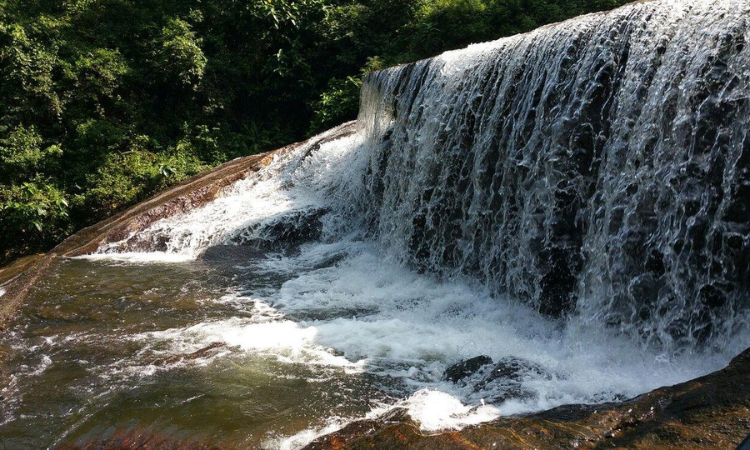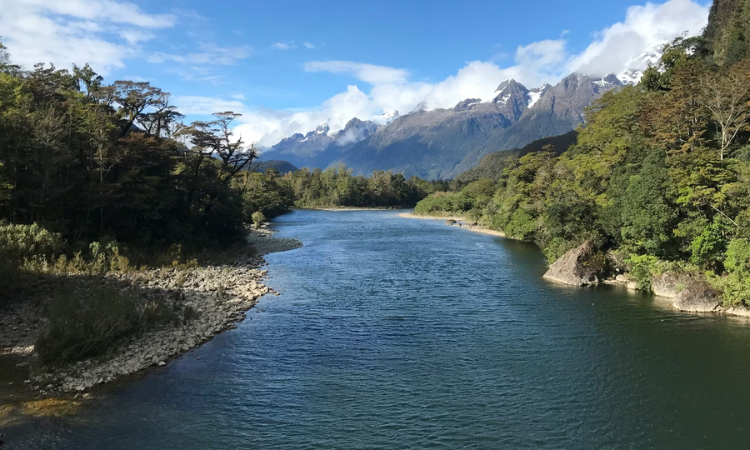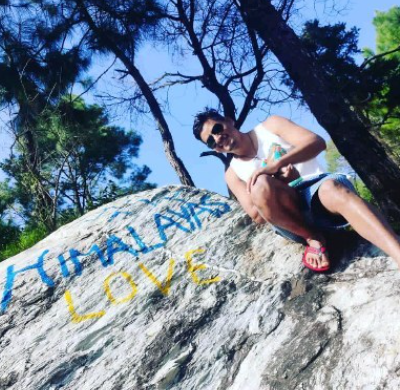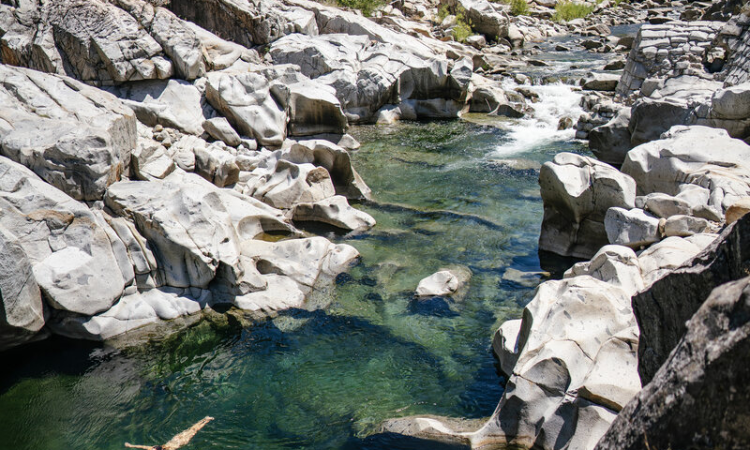As an avid kayaker and outdoor enthusiast with over 7 years of experience exploring rivers across my state, I’ve navigated many hidden waterways that most people don’t even know exist. These out-of-the-way rivers often provide some of the most scenic and serene paddling opportunities, away from the crowds.
In 2024, I encourage everyone to get out and discover new rivers and streams near your hometown. With some clever exploring and the right gear, you can uncover beautiful hidden rivers that will create lasting memories. Here are my top tips for locating and navigating these concealed local waterways this year.
Consult Detailed Topographic Maps
Having up-to-date, highly detailed topographic maps is essential for locating smaller tributaries, creeks, and streams that typically don’t show up on basic recreational maps. Use sites like TopoZone to find 1:24,000 scale maps that show even tiny waterways in your area. Carefully study the maps, looking for blue lines indicating rivers and streams, especially near public lands.
Leverage Satellite Imagery
Modern satellite mapping technology on sites like Google Earth provides another useful way to scout out promising hidden rivers from above. Toggle between map and satellite view and look for visible waterways flowing through remote areas. Cross-reference against other maps to help validate your findings.
Talk to Local Outdoor Experts
Having lived along secluded rivers for over 7 years now, I’ve come to know many stretches intimately, especially near my hometown. Well-connected local outdoorsmen and women can provide insider knowledge to help uncover hidden gems based on years of experience in the region. Consult local paddling groups, conservation organizations, sporting goods shops, and park employees.
Scout Access Points in Person
Once you’ve identified potential hidden rivers on maps and via conversations with experts, verify their existence by scouting access points in person. Carefully hike along the mapped riverbeds, looking for definitive signs of a waterway. Establish one or more viable public launch points for future exploration.
Invest in River-Reading Skills
Before paddling a new hidden river, it is essential to learn how to “read” unfamiliar waterways by sight. Understand what river features indicate shallows, strainers, rapids, etc. Take a swiftwater safety course and go on guided river trips to hone these observation skills before tackling new isolated rivers solo. These skills may save your life.
Use a Portable Water Filter
On remote rivers, you can’t count on public drinking water access. Be sure to bring along a compact, portable water filter so you can safely hydrate from the river itself. I’ve relied on my Sawyer Squeeze filter for years to access drinking water on hidden rivers across the state. Easy to use and budget-friendly.
Start Small and Be Prepared
When exploring a new hidden river for the first time, start modestly with an easy, short float. Bring a detailed map and supplies, wear your PFD, and tell someone your planned route. As you gain familiarity with the river over multiple trips, gradually take on more challenging stretches. But stay prepared for surprises – river levels and conditions can change rapidly, especially on lesser-known waterways.
Appreciate the Rewards
Paddling an untouched hidden river you’ve discovered through your exploration provides one of the most gratifying outdoor experiences imaginable. From wildlife sightings to gorgeous scenery to the child-like sense of exploration, hidden rivers deliver profound rewards. I’ve been hooked since uncovering my first concealed stream 7 years ago, and my passion only grows over time.
Get Out There and Explore!
With some clever sleuthing using maps, satellite data, and local tips paired with smart in-person scouting, you’re bound to uncover incredible hidden rivers in 2024 that will bring you joy for years to come. Just be sure to educate yourself on waterway safety, secure landowner access when required, and practice low-impact techniques when exploring sensitive riparian habitats.
Now grab your kayak and gear and get out there to find your hidden gem! Let the spirit of adventure and discovery lead the way as you forge lasting connections to the remote rivers in your region.
Safely Paddling New Hidden Rivers
When embarking on an excursion on a new hidden river, it’s imperative to keep safety at the forefront. My 7 years of experience has taught me it’s better to have skills and not need them than to need skills and not have them when exploring remote waterways. Here are my top five tips:

Always Wear Your PFD
Before even launching your kayak, securely fasten your flotation device (PFD). This essential piece of safety gear could save your life if you become trapped underwater in a strainer, hydraulic, or other river feature. For remote paddling, choose a high-quality, comfortable PFD you’ll want to wear.
Know Your Kayak Maneuvers
Practice fundamental kayaking techniques like forward paddling, reverse paddling, edging, ferrying, peel-outs, and bracing in safe environments. Mastery of these essential maneuvers will give you precise boat control to avoid hazards when navigating tight hidden rivers. Take an American Canoe Association course.
Read the River
Cultivate keen observation skills to be able to “read” upcoming river features by sight and understand how to paddle them intelligently. Learn to identify downed trees, logjams, wide turns, narrow passages, changes in water speed, and other characteristics. Hidden rivers often have more deadfall and other obstructions which require quick reactions.
Always Scout Rapids First
Before paddling through rapids on an unfamiliar hidden river, get out and scout the entire rapid on foot first, no matter how small. Note any major hazards like strainers, holes, or unusually high-standing waves. Plot your preferred line through the rapid before running it. Portage if necessary.
File a Float Plan
When solo paddling remote hidden rivers with unreliable cell service, always leave a detailed float plan listing your planned put-in/take-out locations and times. Seal it in a waterproof container secured visibly inside your vehicle at the put-in along with emergency contact numbers for people to call if overdue.
Mastering these five safety skills has allowed me to independently and confidently explore dozens of alluring hidden rivers over the past 7 years. But complacency has no place on the water. I still continually challenge myself by taking swiftwater rescue courses and paddling with more experienced companions to sharpen my skillset and decision-making. Safety and preparedness enable remarkable hidden river journeys.
Respecting the River Environment

As someone who has paddled hidden rivers for much of my adult life, I deeply understand the intrinsic value of little-explored waterways. These unique ecosystems harbor exceptional biodiversity and offer refuge for sensitive species displaced from busier rivers. I aim to preserve these habitats through responsible stewardship. Here is how I minimize my impact:
Obtain Legal Access
Before launching, secure documented landowner permission if paddling across private property. Many hidden gems flow through private lands. Shuttle courtesy vehicles out of sight from the river. Leave no trace of your passing.
Practice Leave No Trace Ethics
Pack out all trash and waste. Avoid campfires using portable stoves instead. Urinate into the main current, not vegetated banks. Never cut trees or clear sites. Leave no sign of your visit. Encourage others to adhere to LNT principles when they join you.
Don’t Disturb Wildlife
Refrain from closely approaching shorebirds, nesting waterfowl, otters, and other wildlife. Never feed wild animals. Yield right of way to river denizens. Protect habitat by avoiding sensitive areas. Appreciate sightings from a safe distance.
Clean Gear Thoroughly
Clean all your gear thoroughly after each trip to avoid spreading invasive species to new watersheds. Pay special attention to your kayak, paddle, PFD, boots, waders, and fishing equipment. Prevent cross-contamination between rivers.
Avoid Sharing Undiscovered Locations
When you discover a pristine hidden river, refrain from sharing the location on public forums or social media. Instead selectively inform only ethical, responsible paddlers who will similarly respect the environment. This protects undiscovered waterways from degradation.
With mindful, ethical practices even as visitation increases, we can preserve the delicate ecological balance of hidden rivers for the benefit of wildlife, future generations, and our shared environmental heritage. Our passion for exploration must not come at the expense of habitat conservation. But through education and leadership on best principles, I aim to spread responsible paddling stewardship far and wide.
What Hidden Rivers Have You Explored? I hope this article has inspired you to get out and uncover new-to-you hidden rivers in your region this year. Please share some of your favorite concealed waterways and recent discoveries in the comments. What hidden rivers hold a special place in your heart?
Also Read – Exploring Rivers in Texas – Updated Guide to the Best Spots

Sandeep Karki is a passionate travel writer with a Master’s degree in Environmental Science and over 8 years of experience exploring and documenting the world’s most pristine natural landscapes. As the sole writer for RiverandEarth.com, Sandeep blends his love for travel with a deep understanding of environmental sustainability, offering readers unique insights into eco-friendly travel destinations, outdoor adventures, and cultural experiences. His work emphasizes responsible travel practices that respect and preserve the environment.
Follow Sandeep on Instagram and YouTube for more travel stories and tips on sustainable exploration.
